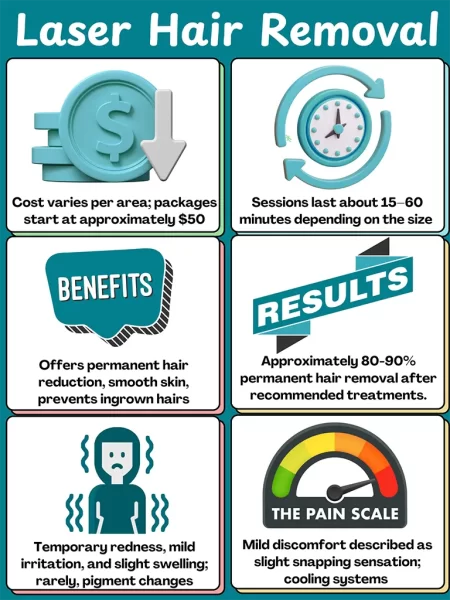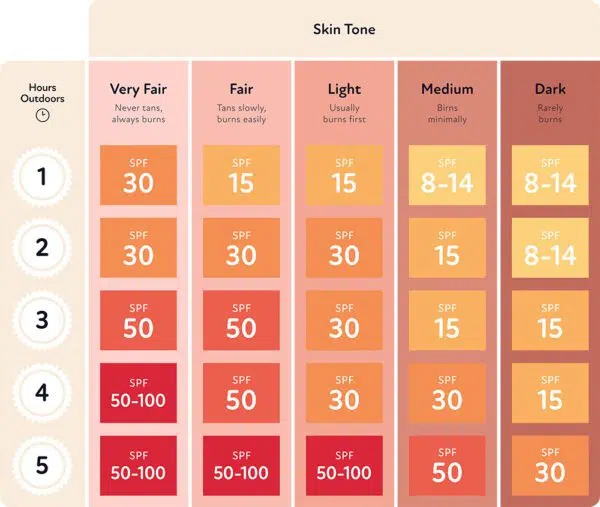Everything You Need to Know About Fitzpatrick Skin Types and Laser Treatments
Whether you’re considering laser hair removal, skin resurfacing, or the eradication of an annoying tattoo, it’s essential to understand how your skin type could affect the procedure’s outcome. That’s where the Fitzpatrick Skin Type system comes in. The skint ypes system was developed in 1975 by Thomas B. Fitzpatrick, a dermatologist at Harvard Medical School. It categorizes skin types according to their response to sunlight and propensity to tan or burn. Let’s dive into the six Fitzpatrick Skin Types and their implications for laser treatments.

The Six Fitzpatrick Skin Types
- Type I: Very fair; often features freckles, red or blond hair, and blue eyes. Burns easily and does not tan.
- Type II: Fair; usually burns, tans minimally. Could have any eye or hair color.
- Type III: Medium skin tones; may burn, but tans gradually to light brown.
- Type IV: Olive or light brown skin; rarely burns, tans well.
- Type V: Dark brown skin; very rarely burns, tans easily and substantially.
- Type VI: Deeply pigmented dark brown to black skin; never burns, tans profusely.
These six types offer a fundamental understanding of how your skin may respond to sunlight and, by extension, laser treatments. So, what does this mean for your laser treatment?

Laser Treatment and Fitzpatrick Skin Type
Laser treatment, including laser hair removal, works by targeting pigmented cells in the skin. In hair removal, the laser focuses on the melanin in the hair follicle, damaging it and inhibiting future growth. The challenge is that the more melanin present in the skin, the higher the risk of potential side effects, such as hyperpigmentation or hypopigmentation. Thus, those with FST IV-VI must approach laser treatments with caution. Here’s how each FST may respond to laser treatment:
- Types I-II: These skin types generally have the least melanin, which reduces the risk of discoloration and burns during laser treatments. These skin types often see the best results with the fewest treatments.
- Type III: This skin type may experience more risk than types I-II, but less than types IV-VI. With a qualified practitioner, laser treatments should still be safe and effective.
- Types IV-VI: These skin types require special consideration due to high melanin levels. While modern lasers have improved safety for darker skin types, there’s still a higher risk for burns, discoloration, or scarring. Practitioners should use lower energy settings and specific wavelengths designed for these skin types.
Bottom Line
The Fitzpatrick Skin Type system isn’t the only factor determining laser treatment suitability, but it’s a crucial starting point. Regardless of your skin type, always seek treatment from a qualified and experienced practitioner. They will consider your skin type, the treatment area, your medical history, and the type of laser that will deliver the best results with the fewest risks.
No matter your Fitzpatrick Skin Type, it’s essential to protect your skin before and after laser treatments. This includes avoiding sun exposure, using sunblock, and following your practitioner’s pre- and post-care instructions. These steps will help ensure your skin heals properly and that you’re happy with your laser treatment results.
Remember, everyone’s skin is unique. The FST system offers a framework, but your individual response to laser treatment may vary. Always consult with a professional to assess your skin and discuss your goals before deciding on any treatment.
Request Your Appointment Today
Request your consultation today and discover how our treatment can refresh your appearance.
Call us at (587) 520‑2835 or use our online booking form to schedule an appointment.
Read our privacy policy here
